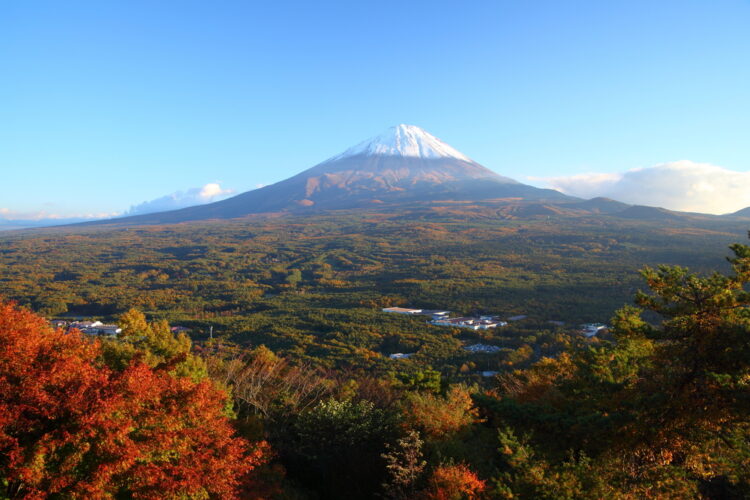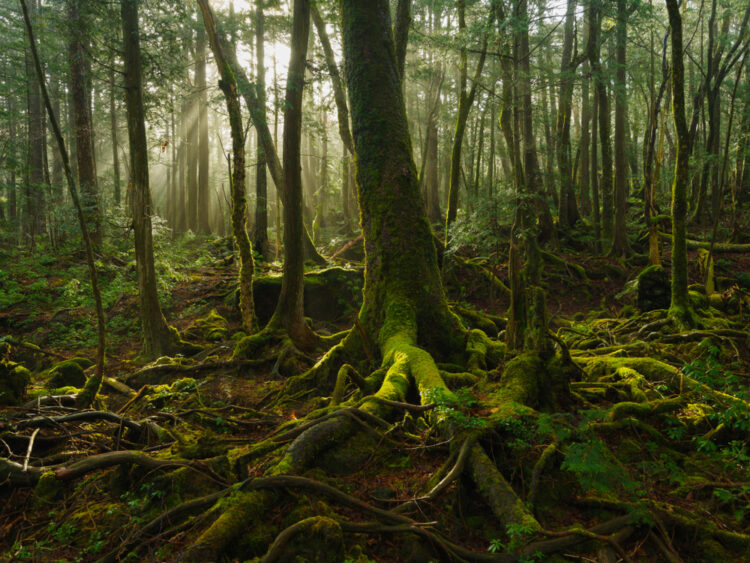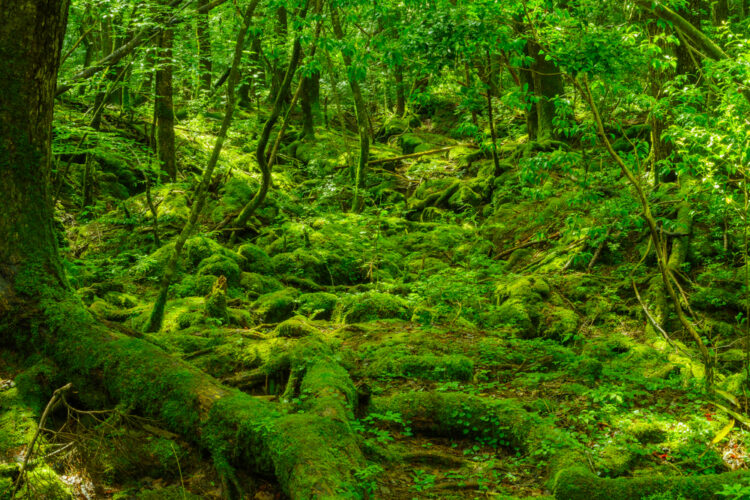Surely one of the darkest destinations in Japan is the Aokigahara Forest, also known as the “Sea of Trees” or “Suicide Forest.” Located at the northwest base of Mount Fuji, it is a dense, moss-covered forest that has gained notoriety as a place where many people go to take their own lives. The forest has a complex history and is shrouded in myth and legend, but its current reputation as a place of tragedy is rooted in its recent past.
The history of Aokigahara Forest dates back centuries, and the forest has played a significant role in Japanese mythology and folklore. According to legend, the forest is inhabited by yurei, or ghosts, who are said to lure people to their deaths. It is believed that these spirits are the souls of those who died in the forest, either from suicide or in ancient battles that took place there.
In more recent history, the forest has been a popular destination for those seeking to end their lives. The reasons for this are complex and varied, but some theories suggest that the forest’s isolation and quietness make it an attractive location for those seeking solitude in their final moments. Additionally, the forest’s association with death may be alluring to some individuals who feel they have nowhere else to turn.

Aokigahara Forest gained international attention in the early 2000s when the number of suicides in the forest increased dramatically. In 2002, 78 people were found dead in the forest, and the number has remained high in the years since. The Japanese government has tried to address the issue, including placing signs throughout the forest with messages like “Think carefully about your children, your family, and your life” and increasing police patrols in the area. According to a website (http://www.aokigaharaforest.com) devoted to the forest, other signs carry the message “Your life is something precious that was given to you by your parents,” while another one states, “Meditate on your parents, siblings, and your children once more. Do not be troubled alone.”

Visitors to the forest report feeling a sense of unease or sadness. The forest’s reputation as a suicide hotspot has made it a subject of fascination for many, and it has been the setting for a number of books, films, and other works of art. One of the most well-known literary works about Aokigahara Forest is the novel “Sea of Trees” by American author Robert James Russell. The book tells the story of a man who travels to the forest with the intention of taking his own life, but who ultimately decides to try to find a way out of the darkness. The novel has been praised for its sensitive portrayal of the complex emotions surrounding suicide and depression, and it has helped to raise awareness about the issue of suicide in Japan and around the world.
Despite the forest’s dark reputation, some people see it as a place of healing and transformation. A number of spiritual and religious groups have visited the forest with the intention of performing rituals or meditating, and some individuals report feeling a sense of peace or transcendence in the forest’s quiet beauty. There are two very popular caves in the forest, the Ice Cave and the Wind Cave.
In recent years, there has been some debate about how best to address the issue of suicide in Aokigahara Forest. Some argue that the best approach is to focus on mental health awareness and support rather than simply trying to prevent people from entering the forest. Others suggest that more must be done to address the social and cultural factors contributing to suicide in Japan, such as the stigma surrounding mental illness and the pressures of conforming to societal norms.
Editor’s Note: According to the 988 Suicide & Crisis Lifeline (https://988lifeline.org) we can all help prevent suicide. The Lifeline provides 24/7, free and confidential support for people in distress, prevention and crisis resources for you or your loved ones.


